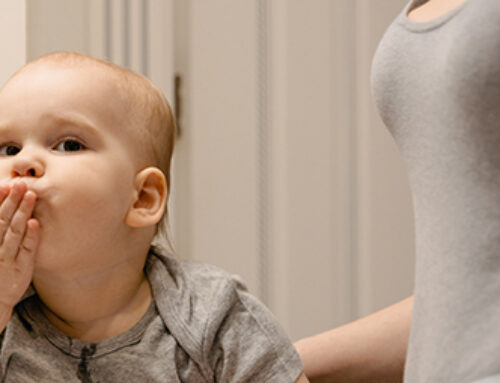Pairing sign language with verbal language can have positive effects on the development of a child. The use of sign language has been shown to facilitate the development of verbal language by providing a bridge to spoken language. Neurology research has shown that sign language stimulates the left hemisphere of the brain, the same part of the brain that verbal language uses.
Using sign language teaches children about the power of communication. When they communicate with others, even with signing, they receive what they want. This is a key concept to understand in early language development. Once a child has learned about the power of communication through sign, they often show an increased motivation to communicate through speech. This comes as a realization of the effects that their communication can have on others.
Signing with Special Needs Children
Additionally, current research states that using alternative communication means such as sign language does not impede kids with speech delays from talking. On the contrary, it may support their ability to speak. Due to very complex challenges in visual, auditory, spatial, and tactile sensory systems, children with relating and communicative disorders often experience difficulties in comprehending a broad range of meanings for the concepts and relations expressed through words.
The use of sign language supports language comprehension or understanding by providing children with more information about the meanings of words, events, concepts, and relations. Signs provide a visual cue to language for those that require additional support.

Speech Delays
Children with speech delays and disorders can have a difficult time expressing themselves and communicating their wants and needs. Using sign language as a non-verbal mode of communication can help support their ability to more clearly express these wants and needs.
Signing can reduce frustrations if a child is unable to speak. It enables children to more effectively communicate when they are hungry or want more of something. This ability can decrease moments of frustration when a child is upset, and finding it difficult to verbally communicate their feelings and frustrations.
Imagine, your child is standing in the hallway, attempting to run away from you, or kicking their feet and yelling in protest. Now, what if your child was able to sign ‘eat.’ You’d be able to immediately understand their desire and provide them with the requested item, avoiding a meltdown altogether.
Signing with your child can begin as early as in infancy, however babies typically are not able to sign in response until after they are at least 6 months old. As with acquisition of all skills, babies develop differently, and the time it takes for your child to understand signs and respond may vary.
Working on Signing With Your Child
- Model!
- Use simple signs during every day, routine experiences.
- Pair the sign you’re modeling with the verbal label of the word.
- Always use the same sign and use lots of repetition.
- Emphasize key vocabulary and concepts.
- The more exposure to sign, the better! You can get the whole family involved.
- Make signing fun! Children are much more likely to learn when they’re having a good time.
- Don’t get discouraged, learning sign language takes time.

Blue Bird Day fosters socialization, sensory regulation, and pre-academic learning in children ages 2-7 years in therapeutic rotations that simulate preschool and kindergarten settings. Our compassionate therapists practice a relationship-based and family-centered approach, provide parent training, and collaborate on goals and individualized intensive treatment plans for your child.
We believe in a collaborative and multi-disciplinary team approach to therapy. A team of occupational therapists, speech-language pathologists, dietitians, developmental therapists, behavioral therapists, physical therapists, and therapeutic assistants are created for each child to ensure child and family are fully supported and the best possible results are achieved.
Options for individualized, group and virtual therapy sessions are available as well.
Want to learn more or you have a specific question? Feel free to connect with us here!



